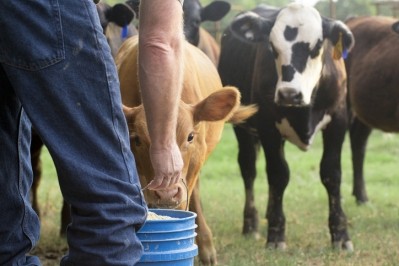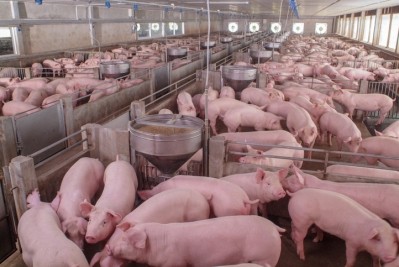Citing ASF, US pork producers call for limits on soy feed imports

The National Pork Producers Council (NPPC) and multiple state pork organizations asked Sonny Perdue, US secretary of agriculture, and the US Department of Agriculture (USDA), to restrict imports of organic soy ingredients intended for use in animal feed and coming from countries known to have African Swine Fever (ASF).
The USDA has the authority through the Animal Health Protection Act to limit these imports from ASF-positive countries, the group said.
“Preventing African swine fever from entering the United States is NPPC’s number one domestic priority,” a spokesperson with the council told FeedNavigator. “Thanks to an effective response by the USDA, Customs and Border Protection and the US pork industry, we are in a significantly strengthened position relative to the ASF risk than we were 18 months ago when it broke in China.”
Several steps have been taken since the outbreak of the disease in China, however, there remain some areas of concern, he said.
Holding time use
Previous research with feed documented that select animal diseases, including ASF and PEDV, can survive in feed and feed ingredients for a period. In theory, it would be possible for pathogens to remain in products following international transport.
Holding imported ingredients for an extended period to allow for viruses to degrade has been one suggested mitigation, according to information from the Swine Health Information Center.
However, a new study examining the use of holding is suggesting that longer times are needed to address certain diseases in specific products, the center said. The new recommendation is to hold soybean meal 125 days, rather than 52 days and to keep organic soybean meal 168
“This request was prompted by recent research that indicated organic soy feed and feed ingredients can hold the virus for longer periods of time than conventional feed products, making holding times an impractical mitigation,” he said. “NPPC will continue to advocate for any and all measures that can be adopted to protect the health of the US swine herd.”
Although the NPPC is in a regular dialogue with the USDA regarding responses to the threat of ASF, there is no update on the request at this time, he said.
The Organic Trade Association (OTA) said that it supports the actions needed to protect the livestock industry.
“While there is no science to support the assessment that organic animal feed products are any more risky than any other feed products from countries with African Swine Fever outbreaks, the organic industry supports whatever steps need to be taken to protect US livestock,” the OTA told us.
About 2% of the organic soybeans imported in 2018 came from China, the association said. “Ultimately, only small amounts of organic soy products are imported into the United States.”
Restriction request and feed ingredients
At this time, the restriction request is focused on organic soy imports intended for use in animal feed, the spokesperson said. The requested restrictions only apply to products coming from ASF-positive countries.
The NPPC is focused on organic products but has asked the USDA to assess risk from any soy product originating in an ASF-positive area, he added.
“While we have concerns with conventional products, we import very little conventional product,” he said. “These products also have shorter holding times to degrade virus.”
The NPPC has confidence in the safety of soy products generated domestically, the council said.
The pork and feed industries have made changes to limit the risk from other imported feed ingredients like vitamins and amino acids, the NCCP said. But using holding times as a mitigation technique is “impractical” for soy ingredients.
Safety measures and remaining questions
To date, the US has taken several steps intended to prevent the introduction of AFS into the US, the spokesperson said. These include increasing research funding exploring feed-related risks, expanding the types of samples tested in the national lab network, and starting a surveillance program focused on early detection.
The country is collaborating with Canada and Mexico, as well as having conversations with export markets and a national ASF exercise was conducted, he said. There are also efforts to have “packer coordination on business continuity in the face of an outbreak.”
Customs and Border Protection forms have been rewritten to provide more clarity, entry port inspections have been increased and funding has been provided to add additional beagles at ports of entry, he said. Also, legislation is progressing to provide funding for an additional 720 agricultural inspectors at entry points as part of the effort to keep ASF or other foreign animal diseases from entering the US.
In addition, work with the Animal and Plant Health Inspection Service (APHIS) regarding ASF and other foreign diseases has raised questions about other areas of response including that the Emergency Management Response System (EMRS) cannot be “quickly populated” and that it is challenging to update premises listed in the database, which could hinder real-time permitting during an outbreak, NPPC said.
“Updating EMRS will require additional resources and we urge you to work with APHIS to begin an update as quickly as possible,” the council said. Adding more laboratory capacity to facilities able to test for diseases like ASF also would be welcome.









